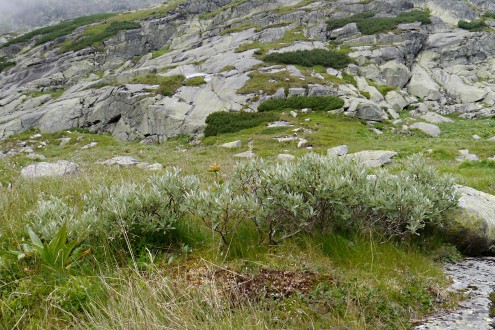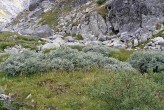- they are simple in basic shape inverted ovate to oblong-inverted lanceolate, 2.5 – 6.0 x 1.2 - 2.2 cm in size, widest in the upper half, shortly bluntly pointed at the base wedge-shaped to rounded at the end
- they are entirely marginal on the upper side, at first relatively densely white, hairy, later more or less balding, dark green, shiny
- the vein is slightly depressed from the upper side
- morphologically, the Swiss willow is a fairly distinct species, the variability of which is manifested mainly in the degree of pubescence on the upper side of the leaves – from densely white-haired (main ♂ individuals) to almost glabrous – dark green glossy (main ♀ individuals)
- on the reverse side, the leaves always remain silky hairy, the vein on the reverse is distinctly protruding - the main central vein, which is yellow in color
• the peduncle is 0.5 – 0.8 cm long, hairy











































